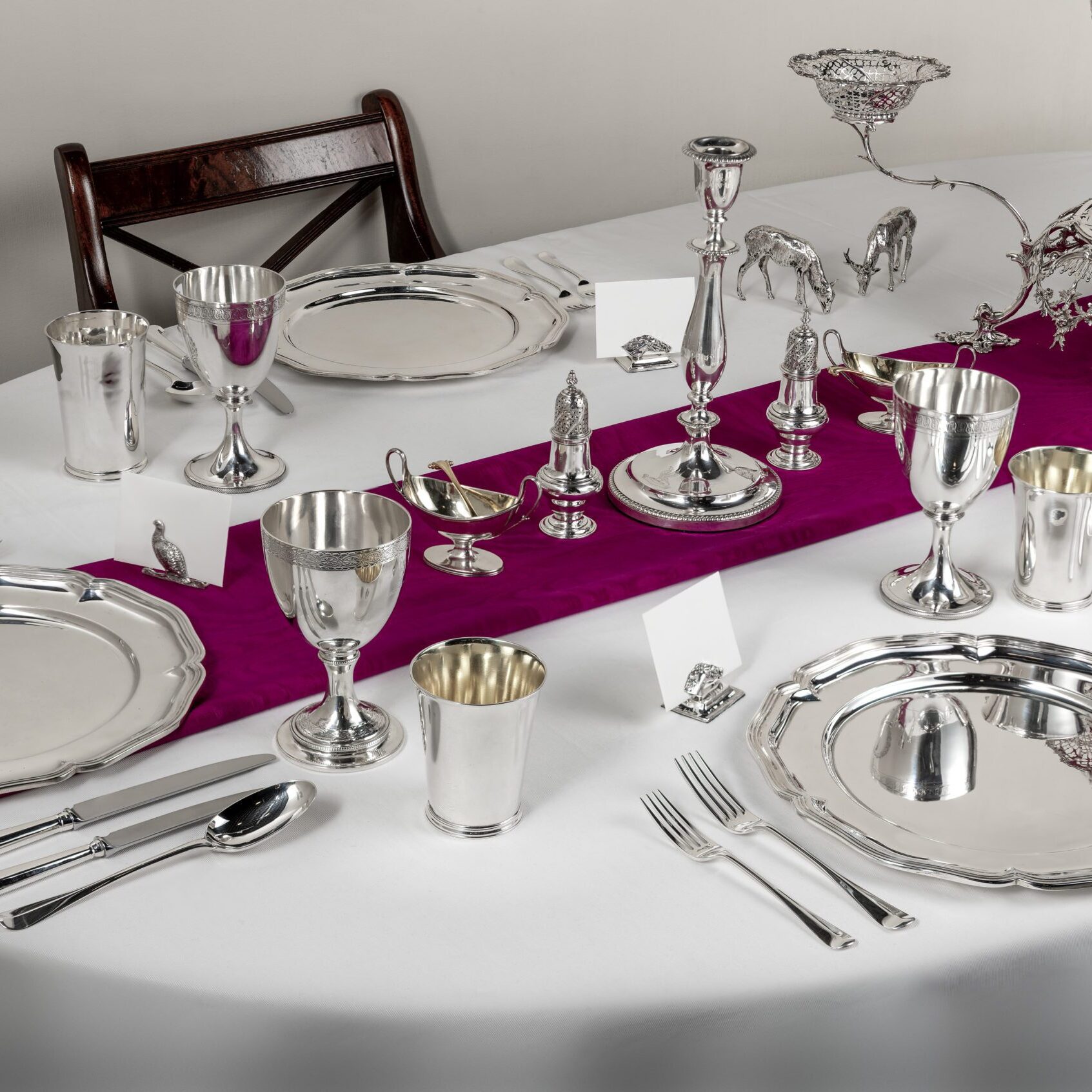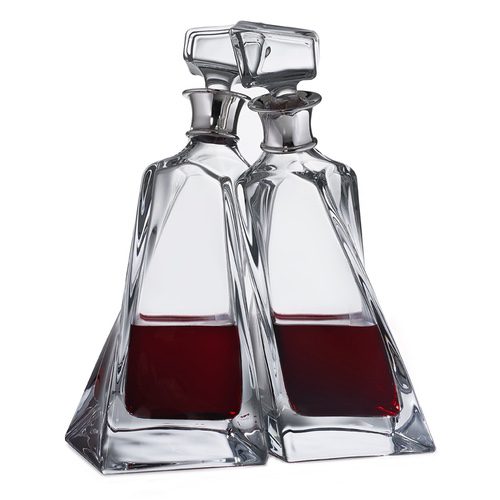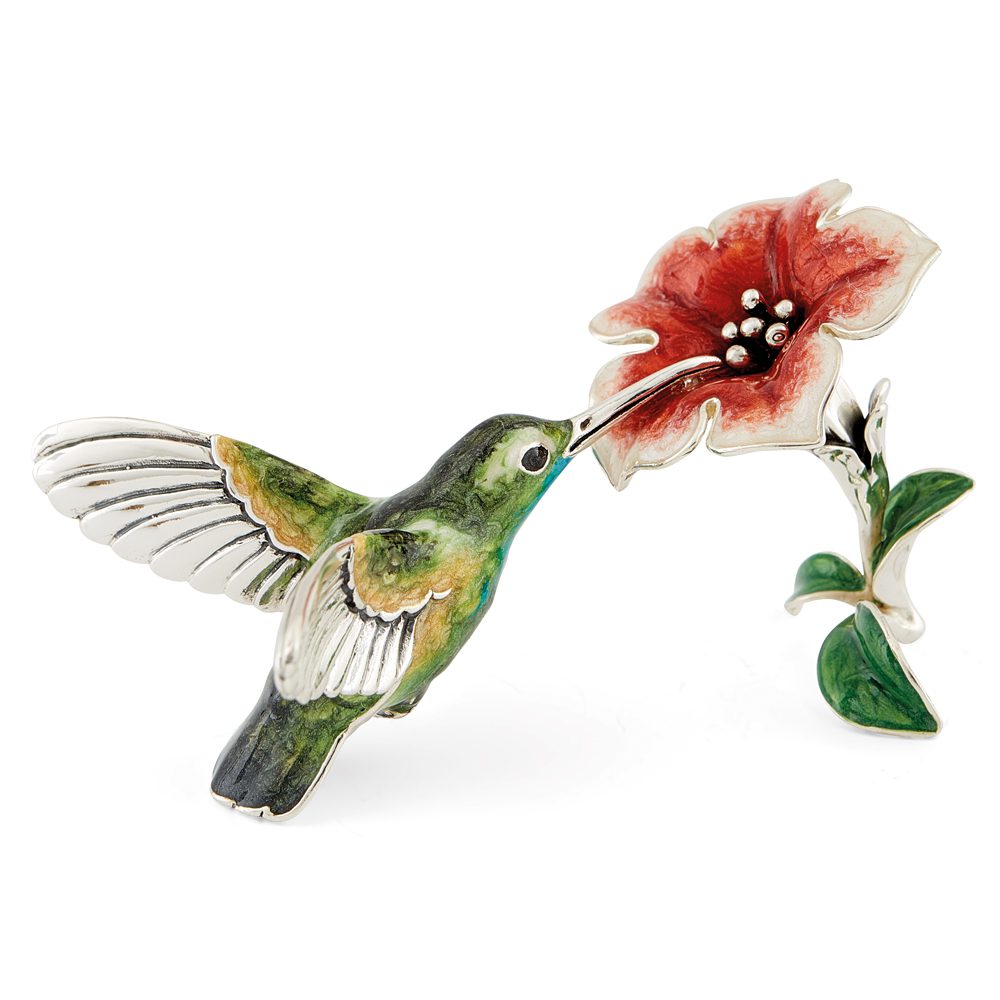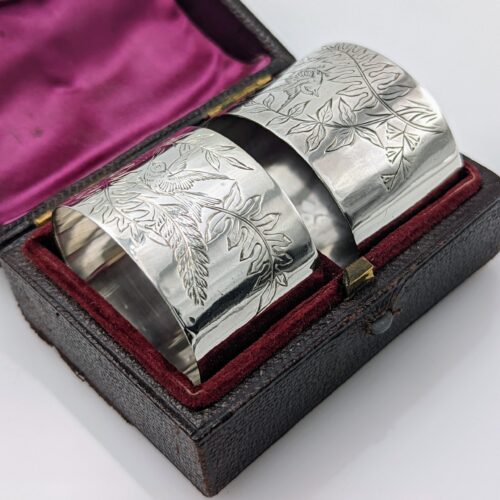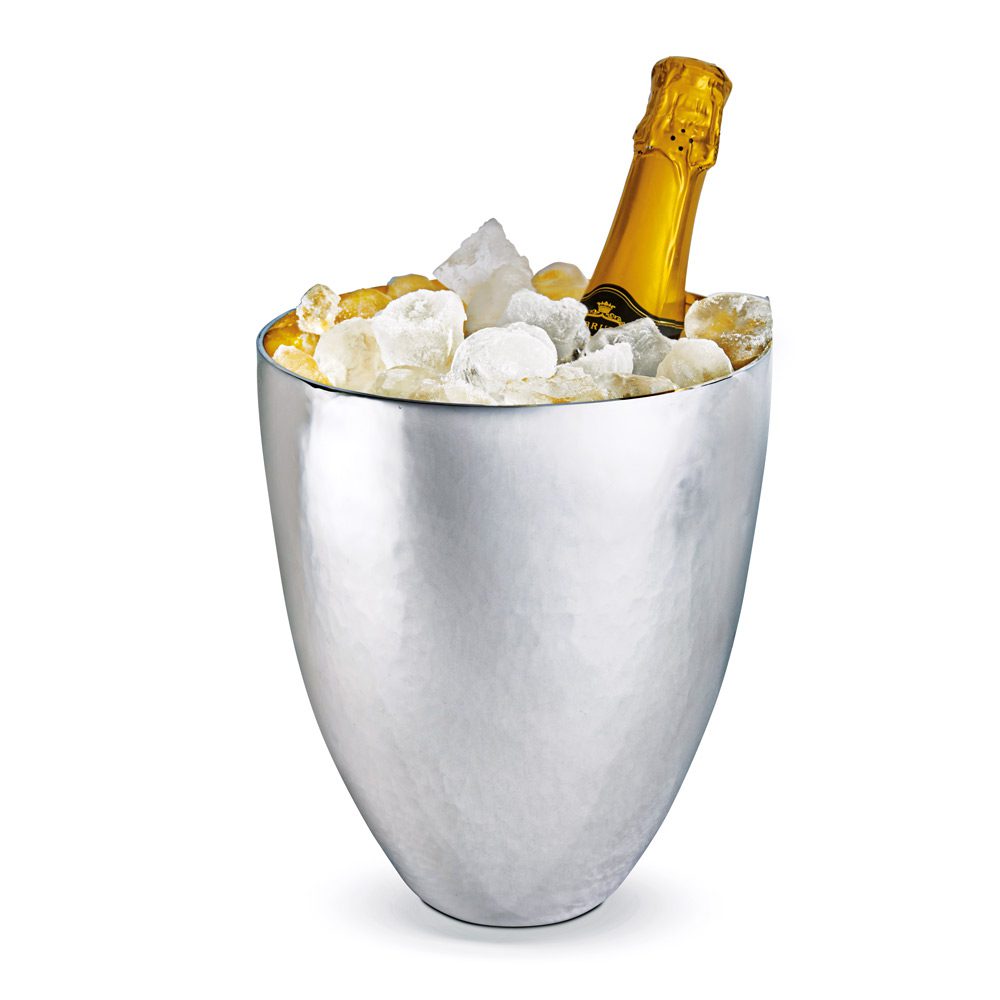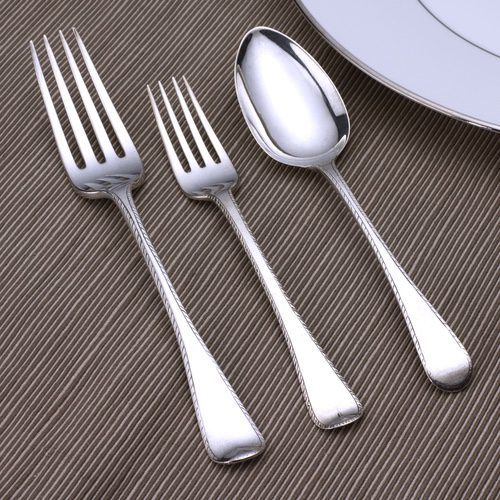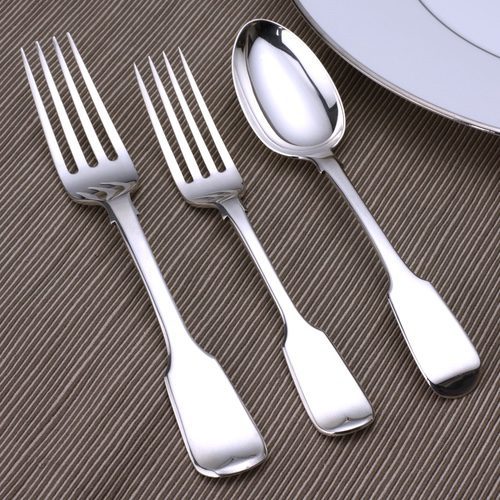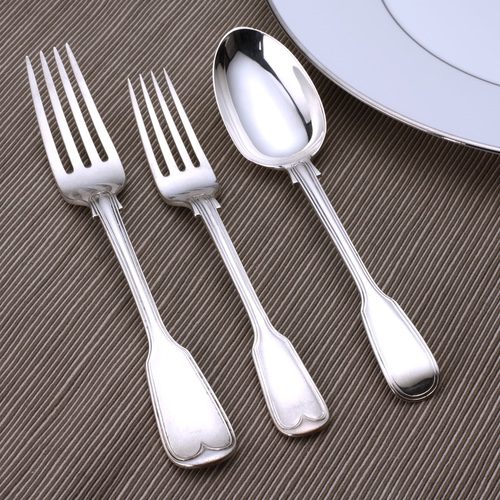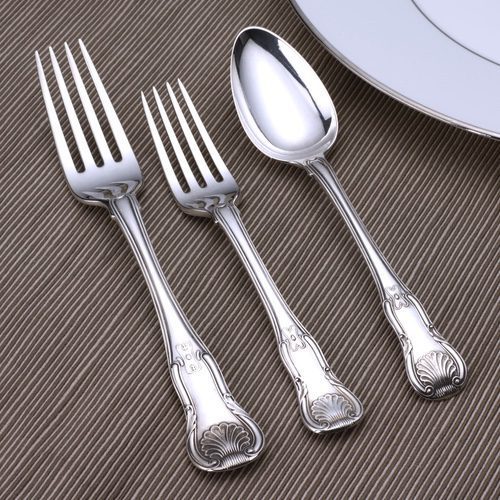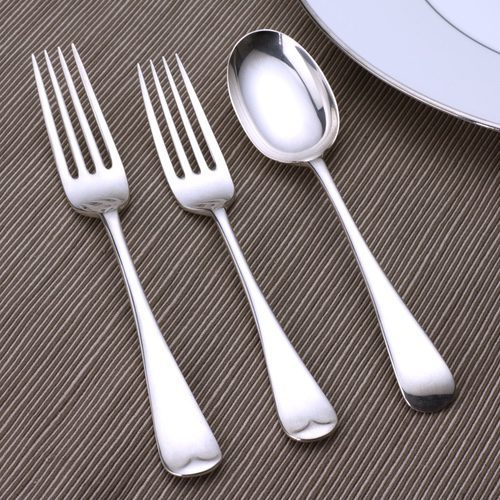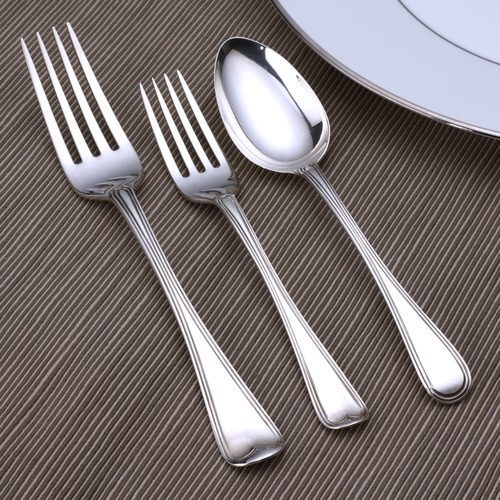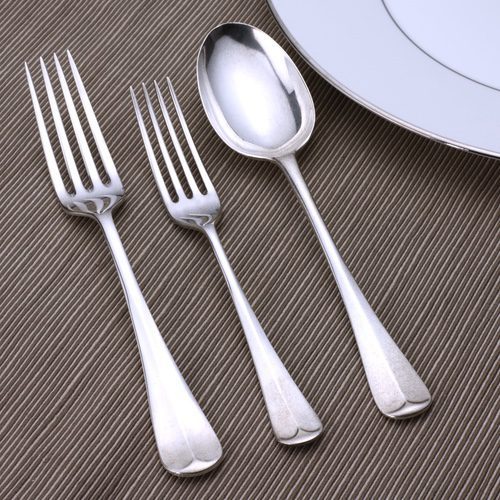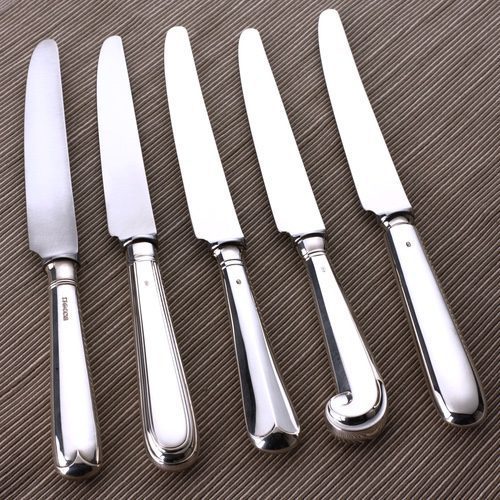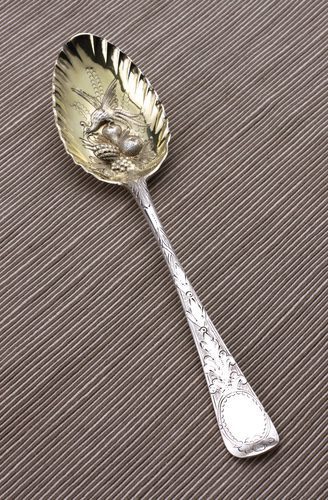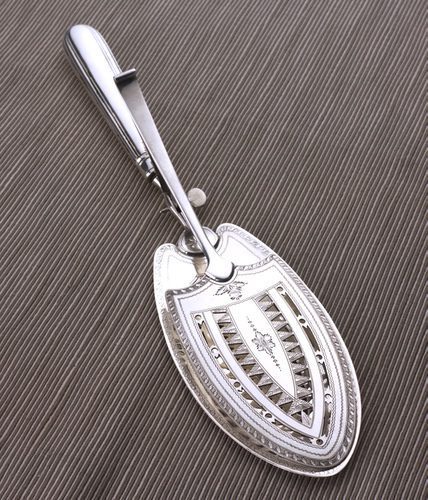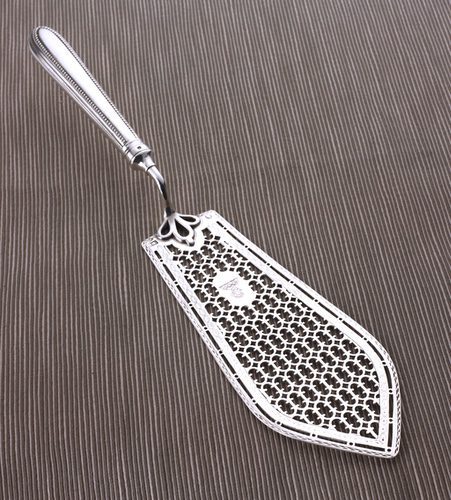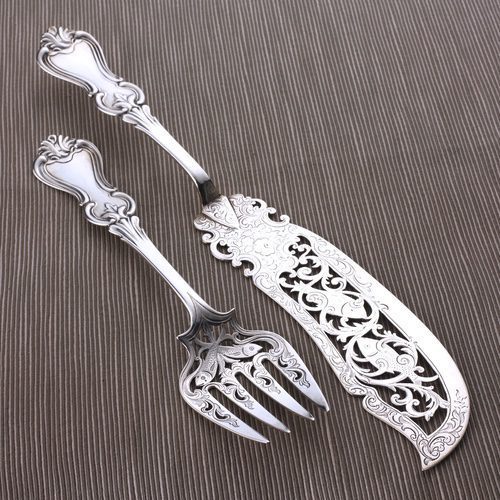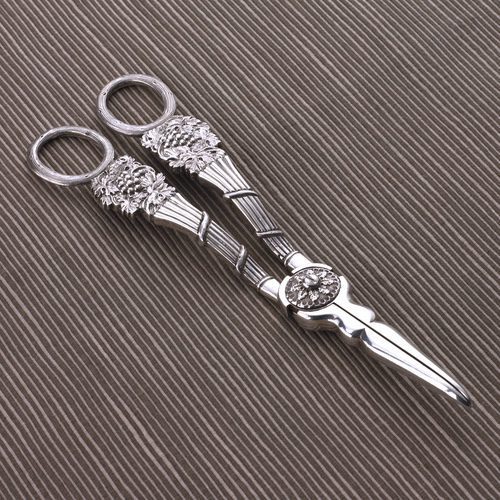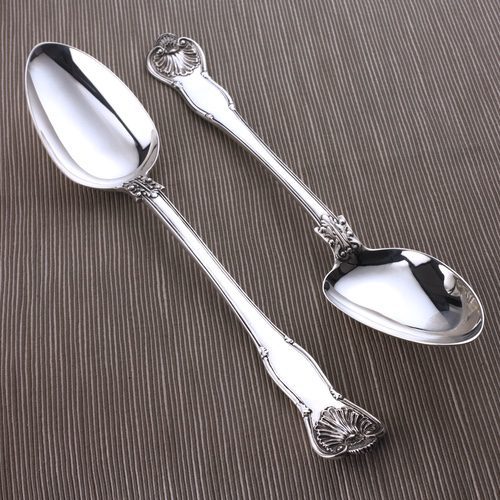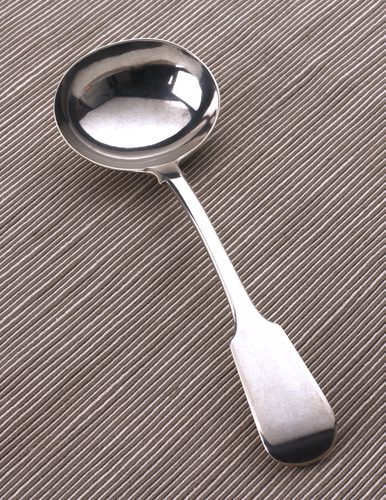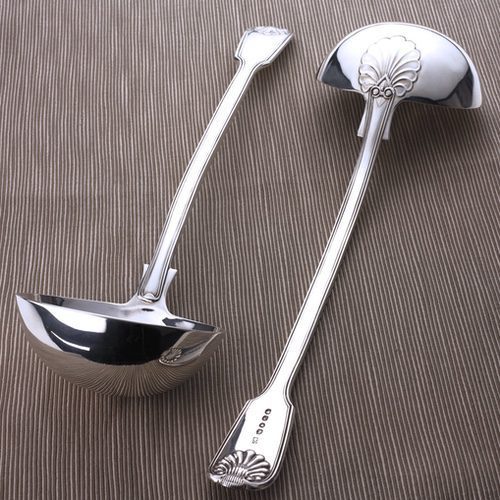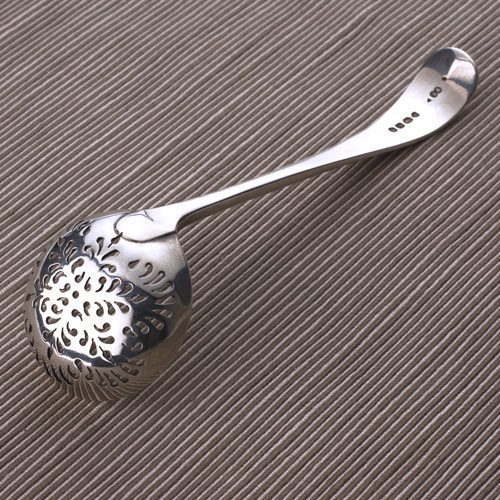Antique Silver Cutlery
Knives and spoons were among the first eating implements used in early settlements, and although the fork (from the Latin – furca) was used for agriculture, it took a surprisingly long time to be scaled down for culinary use in the middle of the first millennium AD. Even then, forks were used mainly for carving, and serving, rather than eating.
Sterling silver flatware (spoons and forks) or cutlery (the collective term for knives, forks and spoons together) is one of the most well known of all silver pieces in the home, and a service is a joy to use and to own. We have more than 50 years experience with cutlery, and can answer any questions you may have.
We provide and can source complete or part-services from the most prestigious silversmiths and cutlers of the last 200 years. In the meantime, please do browse through our selection and information on the patterns, to get an understanding of what may be right for you.

History of Silver Cutlery
- Antique silver services of flatware are typically priced on 60 pieces
- Modern knives are usually added to the service – with stainless steel blades
- Condition is important. Consider the length of tines on forks and quality of the bowl in spoons
- Victorian services are heavier with greater degree of decoration then the Edwardian counterparts
- Pre 1800 examples are uncommon
Rattail, Hanoverian and Old English
Amongst the oldest patterns in English flatware are Rattail, Hanoverian, and Old English. All appear similar, but there are subtle differences that distinguish the three. Rattail is so named because of the distinctive ‘spine’ that forms the front of the spoon, and the ‘tail’ on the back of the bowl. A little later, with the arrival of the German King George I to the English throne comes the plainer, and often 3-tine Hanoverian pattern (which soon modifies into 4 tines).
Then, in the George III period, from 1760 onwards, Old English emerges, reflecting the status of George III as the first English monarch of the Hanover line. Old English features 4 tines, an abbreviated spine on the front of the spoons and forks known as the ‘pip’, and no tail or ‘lug’ on the back. It is considered the most restrained and elegant of the antique British flatware designs. Old English is still manufactured today, but we usually have services that are either Georgian, or Edwardian, when the pattern had a resurgence in popularity.

- George Adams
- William and Mary Chawner
- Jackson and Fullerton
- C J Vander
- Francis Higgins
- William and Elizabeth Eaton
- Lias Brothers
- Richard Crossley and George Smith
- Paul Storr
Arygropoulina, niece of the Byzantine Emperor Basil II, is thought to have brought a set to Venice for her marriage to the son of the Doge, in 1004. At this stage, even relatively high status tables used trenchers (from the Old French – tranchier) of stale bread to eat from. The bread absorbed the juices or sauces from meats and could be eaten at the end of the meal in an ordinary household, but was commonly given as alms to the poor in a small ceremony after a feast. Later, when people more commonly carried their own small knives for eating, trenchers were increasingly made from wood, and scoured with sand after the meal to be used again.
The wooden trencher was the precursor of the plate, which began to appear in earthenware, and metal, then later, Delft and porcelain. By that stage, forks had been more widely adopted by Western Europe, particularly more aristocratic women, such as Catherine de Medici who brought some back to France from Italy in 1533. Henry VIII of England was presented with a sterling silver fork to eat his beloved sweetmeats after dinner, but even he still ate with his hands most of the time. His daughter Elizabeth I increased the usage of the fork at her table, but it was not until the second quarter of the seventeenth century that more spoons and forks in sterling appeared for ‘ordinary’ (as in, affluent but not royal) tables. They were, however, often viewed as a rather pompous way to eat, and the Puritan movement that emerged in the early eighteenth century in Europe and particularly Britain meant that ‘fancy’ cutlery sparked religious condemnation. In addition, forks at this stage were still two-pronged, so unless spearing larger pieces of meat or vegetables, they were somewhat impractical for conveying food from plate to mouth. Rising levels of wealth and sophistication in Europe in the early eighteenth century meant that Germany was responsible for adding in a ‘middle’ or third time, accommodating a more delicate was of eating.
The French were quick to adopt a more refined style of living and dining in the eighteenth century, and, keen to discourage violence, and a more sedate dining experience, began to introduce rounded ends to the blades on table knives from 1699 onwards (although ironically, the ‘pistol’ handle was the most popular style at the time). It was the French who changed dining throughout this century by introducing different sized knives and forks for different courses, seen by some as very ostentatious, but it aided their new way of eating, which was with different courses served at separate times, rather than loading all table with food at the same time in the ‘Russian’ or peasant manner.
By the Victorian period, large services with elaborate patterns, some of which are discussed elsewhere on this page, dominated the British and European dining table, with the fork held in the left hand, knife in the right, and different spoons used for the obligatory soup, then custards, sweet syllabubs and sorbets, and of course, tea and coffee. Styles of eating had changed, however, in America, where the table fork was still relatively scarce until around 1800, meaning that people cut their food into small pieces with their knife, before changing to a spoon held in the right hand to then scoop them up. This form of dining caused a sharp divide in the development of British and American cutlery, the latter of which did not develop a wide range of implements until the late nineteenth century.
The technological advances of the early twentieth century, as well as changes in food storage and processing meant that many more items, such as pickle forks, became popular. Additionally, the invention of stainless steel around 1913 meant that knives were no longer made from mild steel, which was troublesome to keep sharp and rust free.
British Flatware Patterns
“Below is some introductory information on the variety of flatware patterns available in British silver. It’s worth noting that there are many variants on each of the standard patterns, and it would be confusing to explain them all here, so it is limited to the most well known and popular of the styles of each period.”
Rattail, Hanoverian and Old English
Amongst the oldest patterns in English flatware are Rattail, Hanoverian, and Old English. All appear similar, but there are subtle differences that distinguish the three. Rattail is so named because of the distinctive ‘spine’ that forms the front of the spoon, and the ‘tail’ on the back of the bowl. A little later, with the arrival of the German King George I to the English throne comes the plainer, and often 3-tine Hanoverian pattern (which soon modifies into 4 tines).
Then, in the George III period, from 1760 onwards, Old English emerges, reflecting the status of George III as the first English monarch of the Hanover line. Old English features 4 tines, an abbreviated spine on the front of the spoons and forks known as the ‘pip’, and no tail or ‘lug’ on the back. It is considered the most restrained and elegant of the antique British flatware designs. Old English is still manufactured today, but we usually have services that are either Georgian, or Edwardian, when the pattern had a resurgence in popularity.


FIDDLE
The earliest of all the Fiddle patterns is alleged to be a piece in the Esquiline Treasure of the late Roman period in the British Museum, although the inspiration for this piece is not known. The pattern emerges in 1739 in British silver, and becomes increasingly popular until 1800 when it becomes almost ubiquitous. Fiddle pattern always has 4 tines, a lug, and a pip, as well as ‘shoulders’ and the distinctive ‘fiddle body’ at the base. It also combines ‘French’ and ‘English’ contrasts in the spoon and fork, which turn up (forks) and down (spoons), which is a nod to the different ways French and English tables were laid. Fiddle pattern is the most influential of all English flatware patterns, and owing to its increased weight compared to most Old English services, was a good basis for developing the more elaborate styles that dominated the Victorian period.
FIDDLE & THREAD
Fiddle & Thread is a variant of the plain Fiddle pattern, that typically adds around 30% to the weight of a full service, compared to plain Fiddle. It developed in the 1790s, but became most popular around 1810 to 1815. Owing to its additional weight, it was a popular pattern in the military, although examples of regimental silver have usually seen very heavy wear and are less desirable for modern domestic use.
FIDDLE, THREAD & SHELL
Fiddle, Thread & Shell combines Fiddle & Thread, and Fiddle & Shell, adding again to the weight of a full service. It emerged in 1810 and is still produced today. It remains one of the most popular solid silver flatware patterns, and is elegant and formal, yet appropriate for everyday use.
KING’S SHAPE, QUEEN’S SHAPE AND VARIANT
As disposable incomes rose throughout the Regency period, as well as available bullion silver supplies, tastes in silver, as well as other decorative furnishings became more elaborate. King’s pattern is based on French designs of the eighteenth century, but remodelled in the British taste. Ideally, the pattern appears both on the front and on the back (double struck), and there are a large number of variant patterns, such as King’s Hourglass, Honeysuckle, Union Shell, Rosette and Husk.
Victoria and Albert, named after the British Queen and her Consort, are also King’s variants. Queen’s Shape and her variants are a rounded, softer version of King’s, slightly more feminine and a little more scarce, but also popular throughout the nineteenth century.


